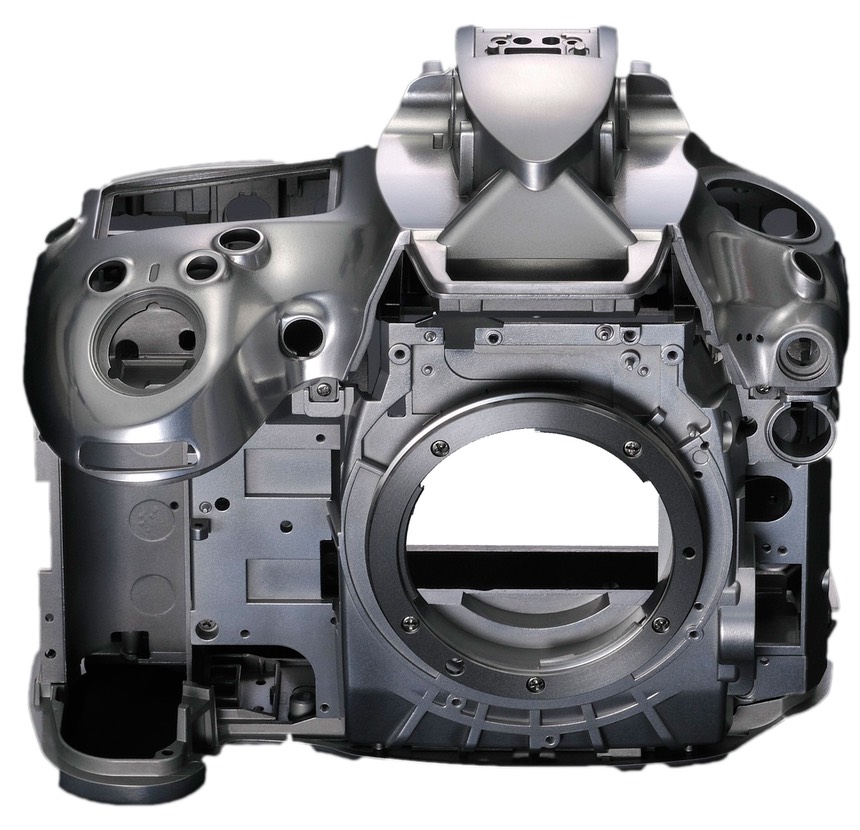
Consider:
- 12 students
- 2 photo instructors
- 4 drivers/guides
- 14 camp staff, cooks, supply truck drivers
- (not pictured) 6 boat drivers, 3 pilots, and more
It's not easy to run a mobile safari workshop. Remember, we spent no more than 3 nights in any one place, which meant that there were 10 large guest tents with bathrooms and one massive mess tent to move every few days, tents for the drivers/guides and crew, plus we also needed to relocate our generator, mobile kitchen, and more.
Cameras? We had a few. Heck, even two of the driver/guides had theirs with them. Final tally was something like this:
- D3s 1
- D800 13
- D7100 6
- D7000 2
- D300 2
- D700 2
- D100 1
- 7D
- V1 4
- V2 2
- X-E1 1
- OM-D 1
- numerous compacts
For big lenses I counted:
- 70-200mm 7
- 70-300mm 2
- 80-400mm 4
- 200-400mm 5
- 300mm 2
- 500mm 2
- 90-250mm (4/3) — 1
Most folk brought laptops, and a few also had iPads. We had both a regular projector and a backup projector with us to do image reviews with. The generator station looked like a warren of cables trying to mate every day.

Casualties:
- D800 broken top LCD: dropped off dash (what was it doing on the dash?)
- D800 broken lens mount: dropped with big lens
- MacBook Pro Retina (mine): sand in the fan (noisy, but still worked; repaired by Apple for free in an hour). Because I was using my laptop in the open mess tent mid-day to do image review and there sometimes was a lot of blowing sand mid-day, I actually had to use a brush to remove sand from the keyboard while doing image review.
- Lost RRS monopod head: literally disappeared in the sand in camp somewhere. Was being carried in a pocket at night while we were doing night shooting and must have fallen out. Couldn't locate next morning (remember, this region of Botswana is several hundred meters deep in sand).
- One GPS 10-pin connector (repaired in field, though the repair isn't likely to last long).
I need to repeat something I've written elsewhere about D800's: don't drop them. Ever. The number of "beyond repair" D800's I know about continues to grow every week. Personally, I regard this a design fault—especially on a camera regarded as "pro" by its maker. What happens is this: if the camera falls and any strong pressure is put on the lens mount, the rear of the metal alloy frame breaks just in front of the rear LCD. The frame can apparently also crack if impact stress is put on it from the back or edges of the camera. Unfortunately, this cracking of the chassis then makes "alignment" impossible. The frame would have to be replaced, and to replace a frame means complete (and I mean complete) disassembly and reassembly, which Nikon won't undertake because it is not financially viable. You're better off buying a new camera when that happens to you.
All you folk that think that "metal frames" or "full frames" or any other sort of construction is preferred over another need to do a rethink. You can make polycarbonate cameras that survive nasty falls and you can make metal cameras that fail almost all the time after a fall. The actual composition of the parts isn't the determinant, it's how well the camera was designed. If you look at the following image, the part that is cracking is at the back of the frame (just under the white area open for the rear LCD):

Frankly, the D800 is turning out to be a camera that can't be mishandled as much as other Nikon pro cameras. So coddle your D800's a bit. Be extremely careful when it might be possible to drop the camera to a hard surface below. True, you shouldn't be dropping your cameras at all, but what I'm saying here is that you have a higher risk of loss instead of repair with a D800 versus a D4, for example.